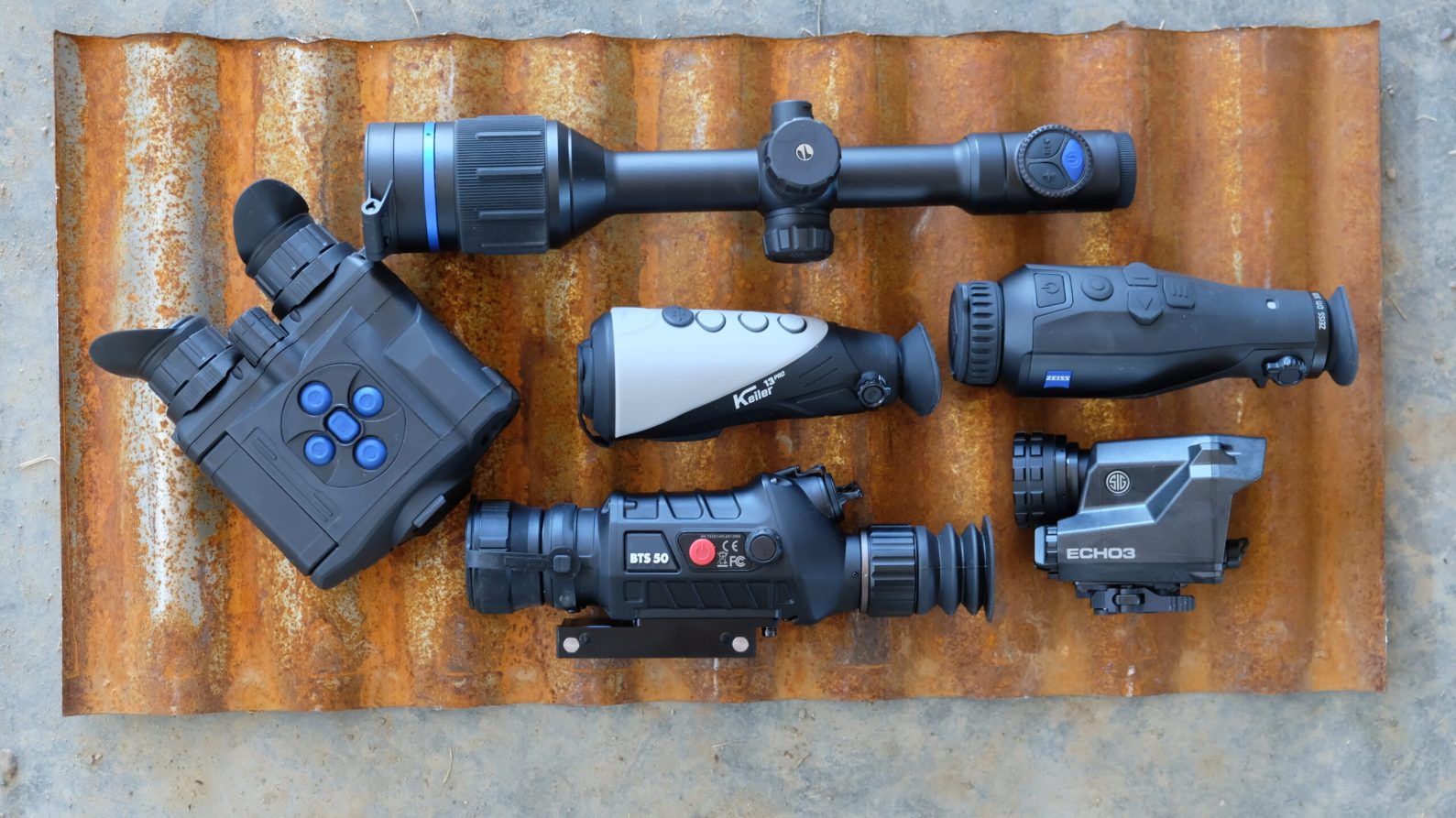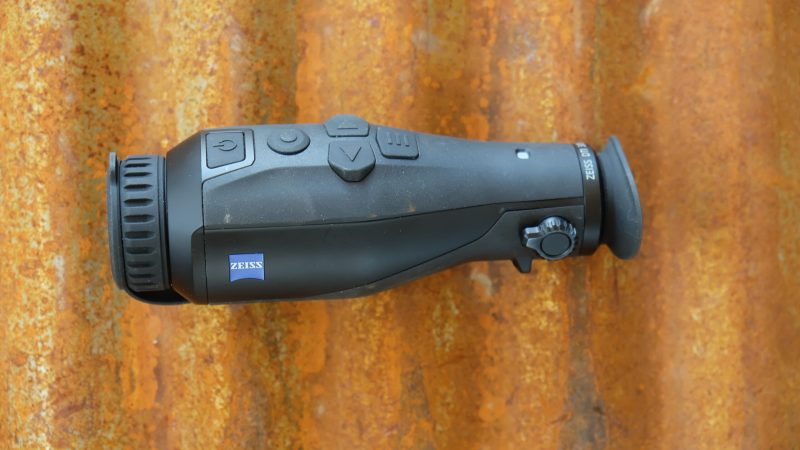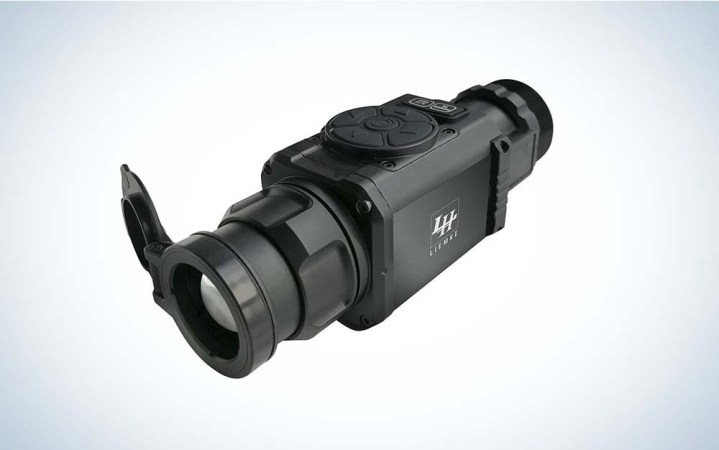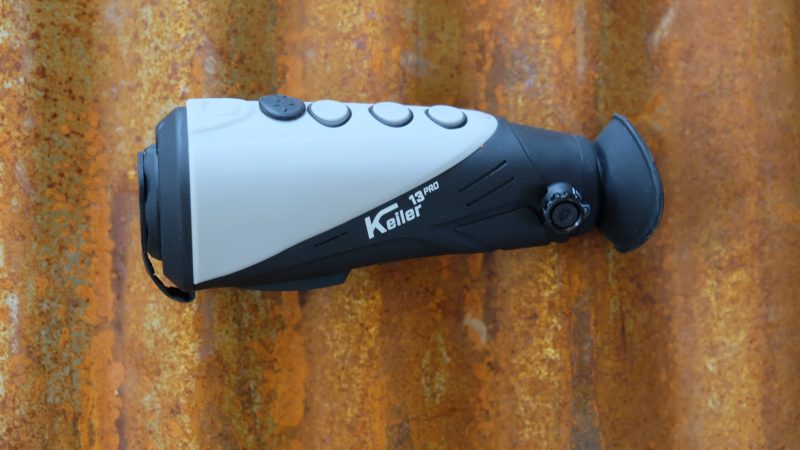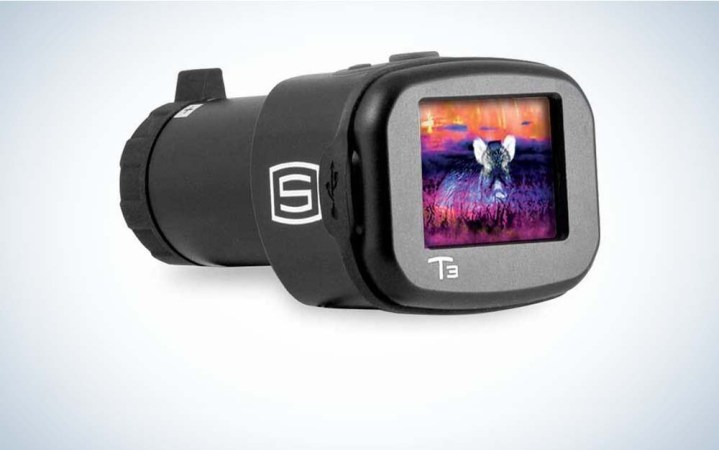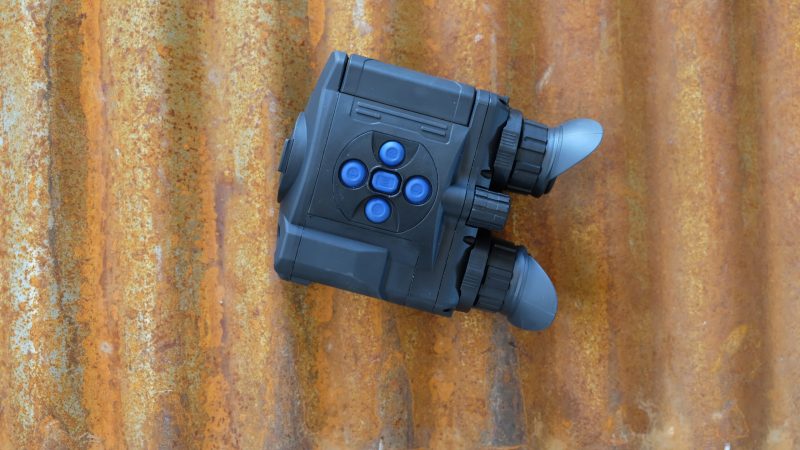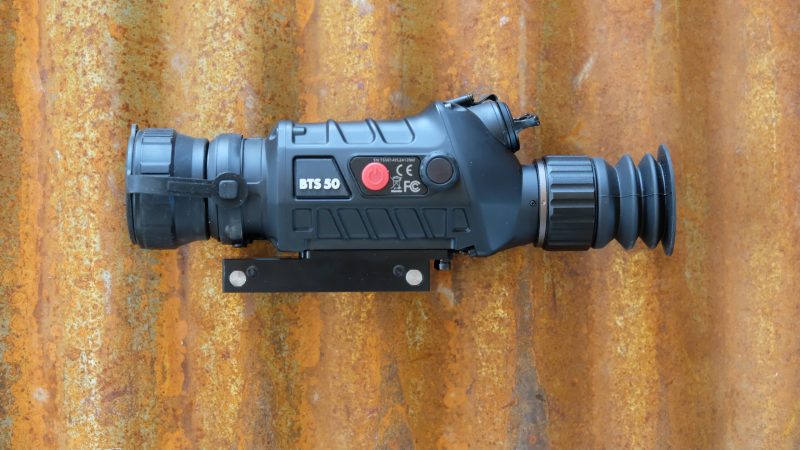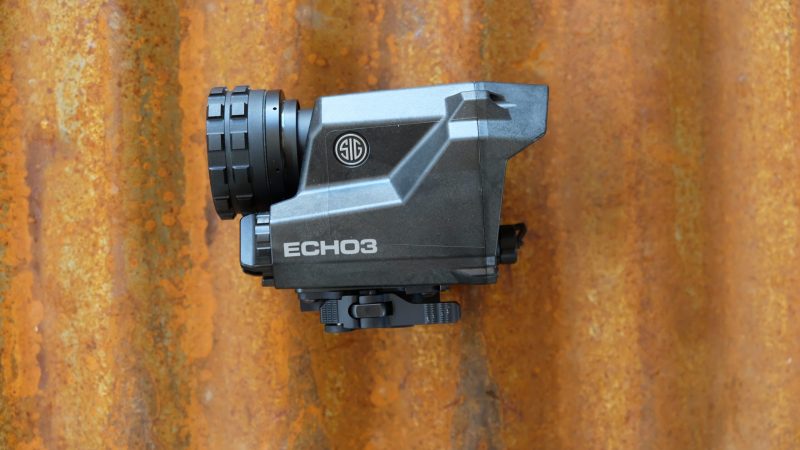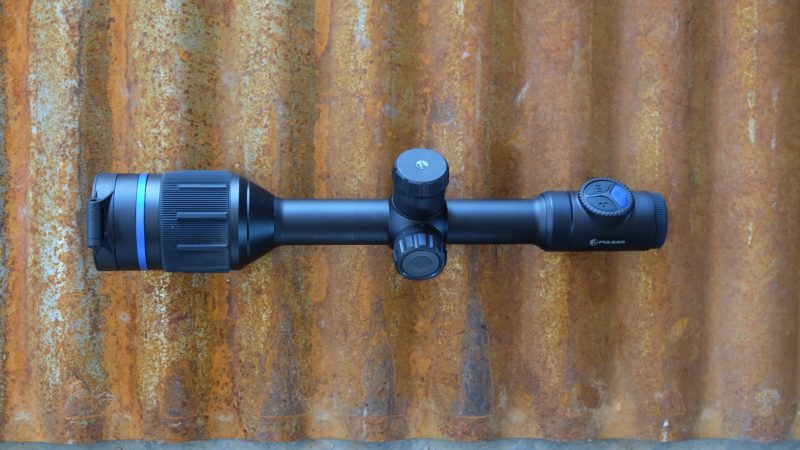We may earn revenue from the products available on this page and participate in affiliate programs. Learn More ›
Until just a couple years ago, Texas hog hunters had the market on thermal rifle sights and handheld monoculars. In fact, more than half of all America’s thermal optics went to Lone Star State shooters and hog-control agents.
While Texas still dominates—thanks to a target-rich environment and permissive laws that allow and even promote night hunting—thermals have become more widely adopted and deployed in other states and seasons. Brands that have never ventured into optics are coming out with thermal product lines, and traditional optics companies are accelerating their introduction of brand-new thermal products.
Some of this market activity is the result of the rise in AR-platform sales. Thermal sights are a good fit for ARs and AKs, which allow quick follow-up shots and chamberings in hog-shooting calibers such as .308, .300 Blackout, and 7.62-39. Affordability, too, has increased demand. You can now buy a reliable thermal for under $1,000, providing additional options for hunters and shooters who have all the traditional riflescopes they need.
How to Choose a Thermal Optic
But what type of thermal is right for you? Do you need a handheld thermal monocular or a clip-on unit that allows you to convert your traditional riflescope into a thermal sight? Maybe you’d rather have a rangefinding binocular with thermal capabilities? Or a self-contained thermal riflescope?
Given that you can spend tens of thousands of dollars on a high-end thermal, or as little as a couple hundred on a pedestrian handheld viewer, you need a guide to the categories, their capabilities, and real-world performance of thermal sights and viewers. That’s the intention of this piece.
But it’s equally important to ask: do you need a thermal at all. My experience with them all spring and summer is that they are powerful tools, indeed, and can give shooters and hunters a shocking degree of advantage over the animals we hunt. But even where it’s legal, is it ethical? Is shooting a coyote or a hog through the use of this audacious technology somehow cheating the experience of the hunt? That’s not for us to say, but it is a question worth considering as you imagine how you plan to deploy a thermal.
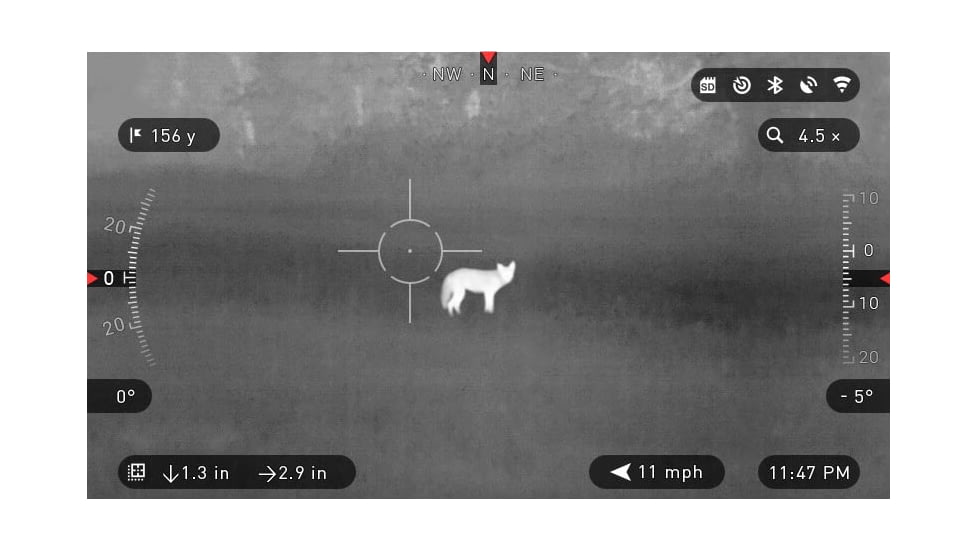
Thermal Sights vs. Views
The first distinction to resolve is between thermals that simply allow you to see heat signatures and those that have a reticle or aiming point superimposed over the digital image.
Handheld viewers have been around for years. One of the most familiar is FLIR’s Scout, which costs around $600, is a pocket-sized thermal monocular that has simple controls and basic still and video image capture. Similarly, the discontinued Leupold LTO-Tracker is a flashlight-looking thermal that projected heat signatures on a small screen in a configuration that could fit in your pants pocket.
The heir to these handy handhelds is Sector Optics’ new T3 thermal imager. With a 2- to 4-power zoom and sensor and display resolution that are anemic but sized about right for the 1-inch screen, the unit records photos, but not video. This is the smallest thermal in our roundup, but also the one that I took everywhere, including to the Alaskan bush to scan the brushy neighborhood of my caribou camp for bears. It doesn’t have a reticle. It isn’t designed to be mounted on a gun (though it can be). But it’s a great example of a go-everywhere, do-anything thermal viewer. Real-world price for this 5.3-ounce, 3-inch unit: around $1,500.
On the other end of the utility spectrum is Pulsar’s Thermion 2 thermal imaging digital riflescope. Designed to be mounted with standard 30mm scope rings as a stand-alone sight, the unit can detect heat signatures out to 2,000 yards. This is the complete package for night hunters, a powerful thermal combined with the aiming capabilities of a riflescope. The unit has a number of customizable reticles, color palettes, and both video and still-image recording capability that can be stored on board the scope or transmitted via WIFI to shooters’ devices.
I used the Thermion 2 on a Texas hog hunt this summer, and its sensitivity and aiming precision allowed me to make head shots on 100-pound pigs out to 250 yards. At 2 a.m.
Then there are clip-on thermals. These are thermal viewers that attach to standard optical riflescopes via some sort of adaptor, turning standard riflescopes into thermal sights. We evaluated Blaser’s Liemke Merlin-13 with a clip-on attachment that mated with any 50mm objective lens. The advantage of this system is that you can use your daytime scope for all the hunting and shooting for which it’s designed. But then you can simply clip on the thermal to transform your daytime rifle into a nighttime jagermeister. Price for the Merlin-13 runs about $2,000.
Best Handheld Thermal Monoculars
We tested a selection of thermal monoculars. Here are the best of the best.
Zeiss DTI 3/35
Key Features
- Image Storage/Sharing: 15 Gb internal storage, plus connectivity to mobile app for image transfer
- Detection Range: 1,350 yards
- Sensor Resolution: 384×288 pixels
- Display Resolution: 1280×960 pixels
- Price: $2,999
Product Overview
Zeiss calls this a “thermal imaging camera,” and puts its emphasis on capturing images, which can be stored onboard the device or transferred via wifi to Zeiss’s Hunting App. We loved the ergonomics of this hand-filling unit, and the “buttonology” was among the best in the field. Zeiss claims a working range of about 1,300 yards, but while the image remains fairly coherent at 1 and 2 power, at the maximum zoom of 4x, the image gets so pixilated that its effective range is inside 100 yards. We noted that download speeds of images to the mobile app are slow and the operation eats battery life, but also that if you don’t use the app, battery life is 6 hours or better. We loved the tripod adapter and the sleek ergonomics of the unit.
Liemke Merlin-35
Key Features
- Configuration: 2-4x
- Image Storage/Sharing: Limited onboard photo and video storage, but ability to link to app via WIFI.
- Detection Range: 1,350 yards
- Sensor Resolution: 384×288 pixels
- Display Resolution: 1024×768 pixels
- Price: $3,999
Product Overview
As you’ll read below, this could have easily been categorized as a rifle sight. Similar to the Zeiss in terms of performance and functions, the Liemke excelled as a combination handheld monocular and rifle-mounted scope. We found that it took some tuning to get the device to function as a forward-mounted scope accessory, but once you’ve figured out the mounting dimensions, you can remove the Liemke and use it as a handheld monocular, then re-mount it to the rifle to make thermal-informed aiming solutions through your standard riflescope. That definitely boosts its versatility score. In real-world situations, we found its ranging was limited to about 200 yards.
Keiler-13 PRO Ceramic Thermal
Key Features
- Configuration: 1-2x
- Image Storage/Sharing:
- Detection Range: 500 yards
- Sensor Resolution: 240×180 pixels
- Display Resolution: 720×540 pixels
- Price: $1,199
Product Overview
More of an entry-level thermal monocular and camera, this unit does pretty much everything you want, with 4 color modes and decent reach. The unit is able to capture both still photos and videos, but we were unable to determine internal storage capacity or how it links with a mobile app. We found images to be grainy even inside 100 yards, but love the long (12-hour) battery life.
Sector T3
Key Features
- Configuration: 2-4x
- Image Storage/Sharing: Onboard photo recording, 100 screenshots
- Detection Range: @150 yards
- Sensor Resolution: 160×120 pixels
- Display Resolution: 160×128 pixels
- Price: $1,779
Product Overview
A simple, fun handheld unit that has limited range and resolution but makes up for it in portability and ease of deployment. We struggled defining heat signatures outside about 50 yards, though we were able to pick up images out to 150 yards. The resolution of both the sensor and the display are among the lowest in the test, but the display screen is only 1.5 inches (measured diagonally), so any more resolution would probably be wasted with a unit this size. Its main benefits are its extreme portability and intuitive controls. The T3 has additional versatility as a rifle-mounted viewer—its tube is compatible with 1-inch rings—but we didn’t fully explore this functionality.
The Best Thermal Rangefinding Binoculars
The best new thermal rangefinding binoculars allow you to range targets day or night.
Pulsar Accolade 2 LRF
Key Features
- Configuration: 2.5-20x
- Image Storage/Sharing: 16 GB storage, video, and still images sharable via WIFI to mobile app
- Detection Range: 2,000 yards
- Sensor Resolution: 640×480 pixels
- Display Resolution: 640×480 pixels
- Price: $5,898
Product Overview
The only rangefinding thermal binocular in our roundup, the Accolade has 1,000-yard ranging capability and 2,000-yard thermal detection capability. Its ability to share video and still images over WIFI to its mobile app make this a great memory recorder. Its buttons are intuitive, and the image it produced to both the display and the video were the best in the evaluation. We found the best magnifications to be at 5x and 10x for combination of clarity and brightness. Given the gargantuan amount of processing this binocular does, battery life was impressive, with over 5 hours of continuous use. As good as the image and interface, what sold us on this unit is the rangefinder. Estimating range is the hardest thing about night hunting, and this unit removed much of the mystery of range to target.
The Best Thermal Riflescopes
Serious hog and predator hunters use thermal scopes to own the night. Here are the best thermal riflescopes of 2021.
Burris BTS-50
Key Features
- Configuration: 2.9-9.2x
- Image Storage/Sharing: still and video images export via wired port
- Detection Range: 1,000 yards
- Sensor Resolution: 400×300 pixels
- Display Resolution: 1024×568 pixels
- Price: $4,199
Product Overview
A burly and durable unit, this riflescope relies on an ingenious button-and-dial control interface rather than the multiple-button menu of most thermals. The result is that, once you get used to the functionality, you can easily riff through various menus and screens with relative ease. The unit includes a rangefinder, choice of several different reticle options, and seven different color palettes. The Burris also employs its “Hot Track” feature, which tracks the warmest object in the field of view. It’s a useful option for detecting and then following moving creatures.
SIG ECHO 3
Key Features
- Configuration: 2-12x
- Image Storage/Sharing: unlimited photo and video streaming via mobile app
- Detection Range: @1,000 yards
- Sensor Resolution: 320×240 pixels
- Display Resolution: 454×454 pixels
- Price: $4,399
Product Overview
This is the only thermal reflex sight in our buyers guide, but it shows the immense capability of the platform. At only 4.3 inches in length, it easily fits most AR carbine and pistol platforms, and can also be mounted to pistols and rifles. The interface is a single button that can be moved like a joystick or pressed for menu options. The unit is compatible with SIG’s BDX technology that accepts input from a BDX-compatible laser rangefinder, and offers multiple reticle options, including ballistic reticles that show range-adjusted holds. Additional features include SIG’s proprietary Level-Plex anti-can system, eight color palettes, and a recoil-video recording feature that captures video prior to and following recoil.
Pulsar Thermion 2 XP50
Key Features
- Configuration: 2-16x
- Image Storage/Sharing: Still and video recording, 16 GB internal memory and sharable via WIFI to mobile app
- Detection Range: 2,000 yards
- Sensor Resolution: 640×480 pixels
- Display Resolution: 1024×768 pixels
- Price: $4,999
Product Overview
The ultimate expression of a thermal riflescope, this unit has a wide range of customizable reticle, including scalable ballistic styles in a number of colors. Its picture-in-a-picture display enlarges the image in the center of the reticle for precise shot placement. It mounts on standard 30mm rings, and the images it records are among the best in our evaluation. Connecting to the Stream Vision mobile app can be wonky, but when it works, image sharing is seamless. The unit includes features like its “Image Boost” capability, which can enhance the image detail, and a wonderful refresh button on top of the turret. Battery life is limited, but with built-in and rechargeable batteries, you can get a good night of hunting in on a single charge.
How We Chose the Best Thermal Optics
We put out a call for new-for-the-year thermal units, and evaluated eight of various types and configurations. It’s interesting to note that the category is so active that another half-dozen models have come on the market since we asked for submissions. But the handful in our test offer enough variation, price, and performance to give you a pretty good idea of what’s on the market for thermals. I evaluated each thermal optic on the following criteria:
- Ease of Use and Setup: How easy was it to set up and use?
- Clarity of Image: How useful was the view through the optic?
- Versatility: Could the thermal optic be used for a variety of applications?
- Value: Are you getting what you pay for?
Are Thermals Worth the Price?
Your eyes may roll with the prices of some thermals, but you are paying for sophisticated digital sensors and processors, and in some cases, Bluetooth transmitters. You are also paying for germanium glass, the heart of thermal devices. It’s a rare material with an extremely high refractive index, making germanium lenses transparent to infrared radiation, which is registered as heat by sensors.
It’s not only an uncommon natural element, but it’s brittle, meaning that it’s hard to manufacture into lenses with the durability and versatility required by hunters. All that adds up to higher costs compared to optics with traditional glass lenses.
But the price of many thermals includes features you may not want or need. Don’t need the ability to record images? Find a unit without Bluetooth or WIFI connectivity. Maybe you need a sensor with the sensitivity to parse a possum from a raccoon, or a buck from a doe at 500 yards? Then you’ll want to pay more for sensors with higher resolution. Other variables—color modes, laser rangefinding, reticle options, and warranty details—are all worth investigating as you compare thermal units.
Tips for Using Thermals For the First Time
I helped Andrew McKean test thermal units over the course of the summer in our hometown of Glasgow, Mont., and he asked me to add my thoughts about using thermals for the first time, along with some tricks and tips that I picked up from more experienced thermal users.
First, most thermals have a variety of color palettes that you can choose based on conditions. I encourage you to experiment with different colors. I found that I used the “white-hot” setting in most situations because it displays objects quickly and clearly, using high contrast to differentiate different heat signatures. But as I got more comfortable with units, I used rainbow and sepia, because they distinguish targets at various distances and help identify both the size and interior details of targets. But as the object got closer, I found that switching to the white-hot or the “black-hot” palettes helped me distinguish where to place my crosshairs for a shot.
Most first-time thermal-scope users struggle with sighting in the unit. That’s because you don’t use see-through optics, but rather heat signatures to establish your zero. One of the most useful hacks I learned is using a piece of cardboard or foamboard as a backing board, with an X of duct tape to mark your zero. After a few minutes of absorbing warmth from the sun, the duct tape is clearly distinguishable from the foam or cardboard, and makes zeroing a cinch.
Your eyes will become fatigued quickly when you use a bright thermal screen at night, because they are constantly shifting from dark to light. An eyepatch will help. Place the patch over your shooting eye when you’re walking to your stand. Then move the patch to your non-dominant eye once you get set up. That will save you from losing night vision in your shooting eye. It’s also useful to mute the brightness settings in the display to the dimmest level that still allows you to see the image.
Lastly, here are some pros and cons of thermals. They are like magic. They give you an empowering sense that you can tame the darkness. Having used night-vision scopes many times, I found thermals to be a whole new experience. My kids thought it would be fun to play hide and seek. It was only fun for a few minutes. I could find them using thermals without even trying.
Their remarkable capability raises ethical questions in the realm of hunting and sportsmanship. While I definitely feel that thermals have their place in predator control, and hog control, they takes a lot of the difficulty of locating an animal out of the hunt. Hunting is about the chase, the adventure, but using thermals to find animals in order to hunt them feels a little like cheating. – Kyle Gibson
